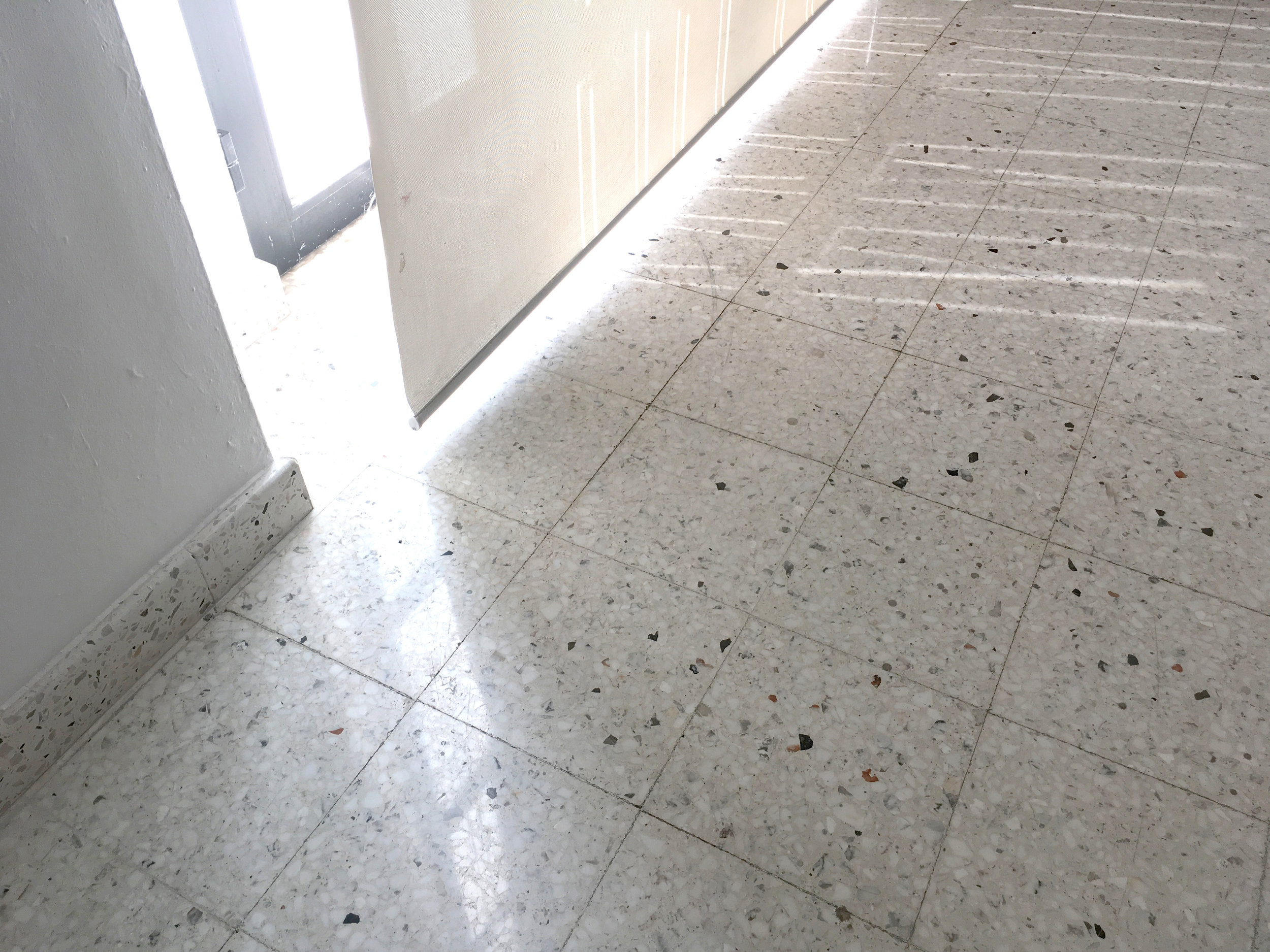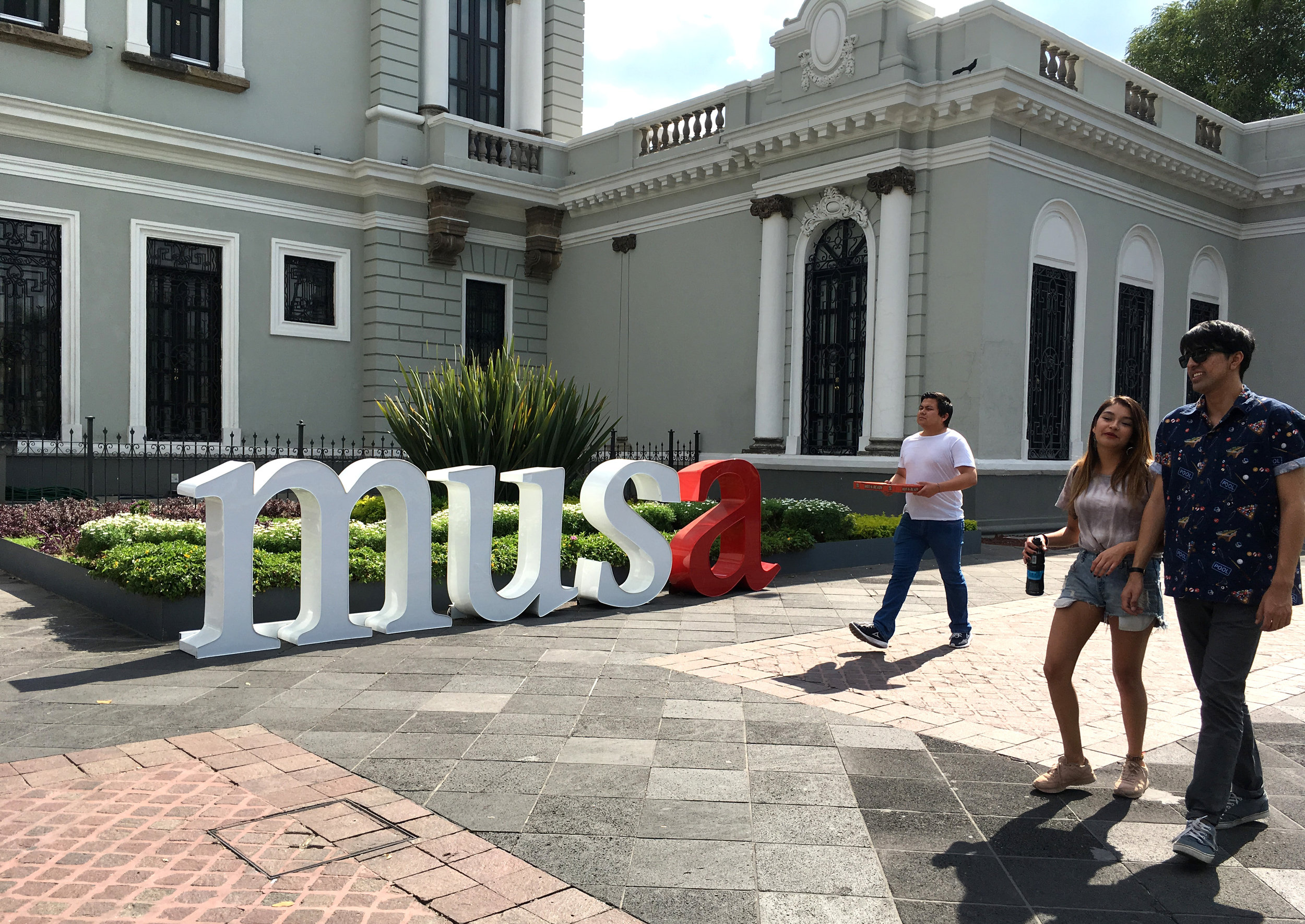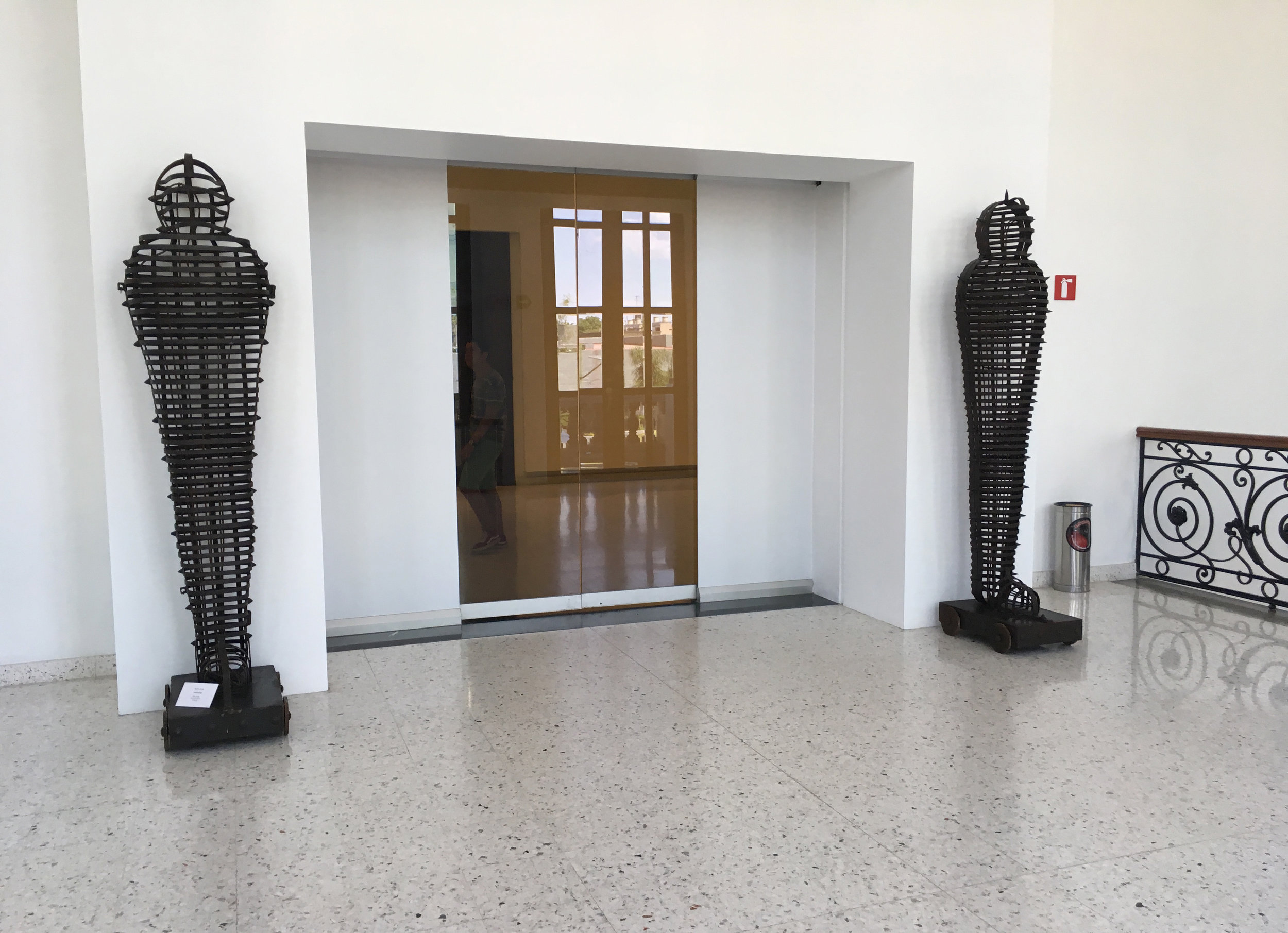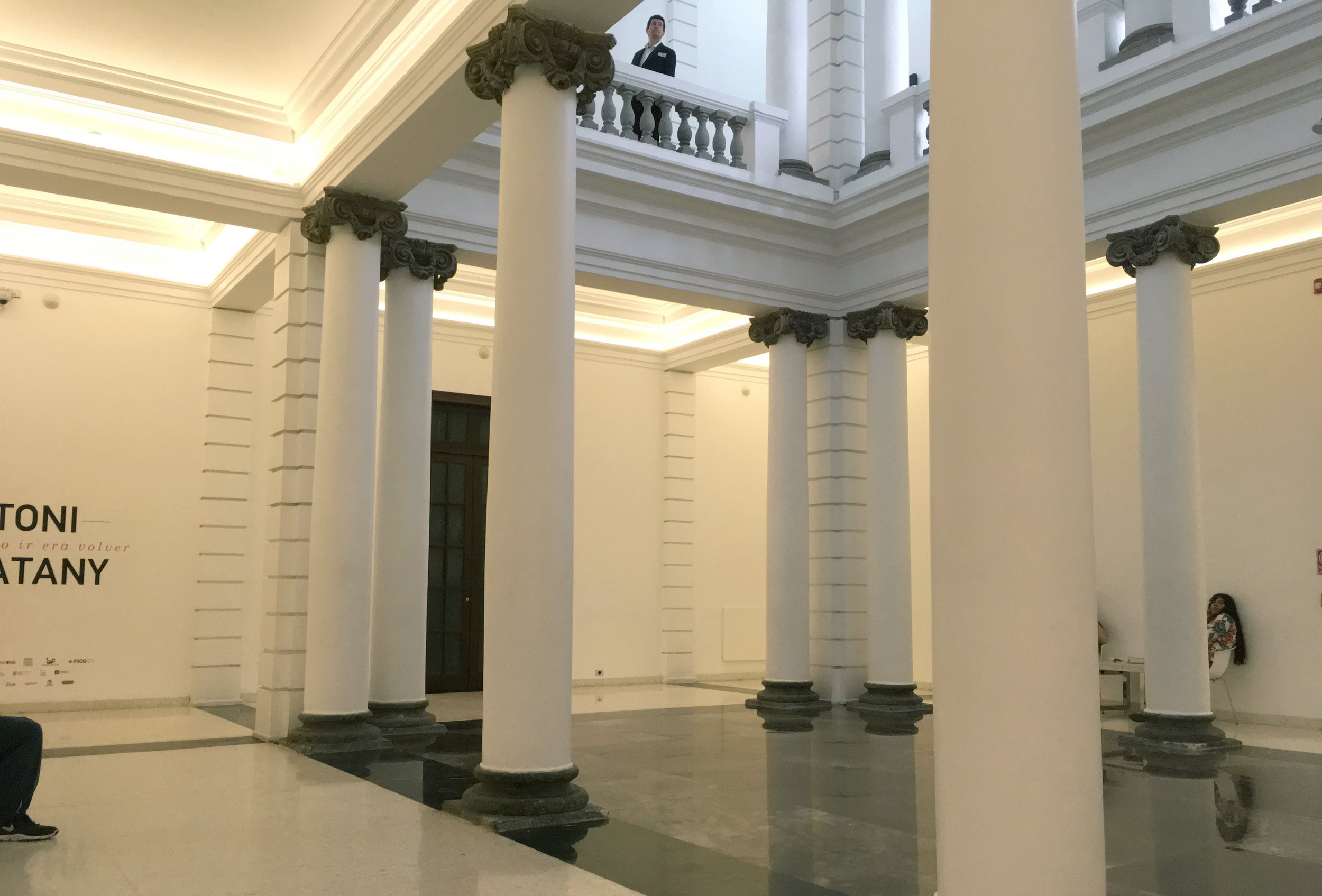The Unbearable Whiteness (Guadalajara)
Guadalajara, Mexico. Museo de Las Artes (MUSA). White is a universal symbol of neutrality and objectivity. It creates the purified container and official "void" that surrounds contemporary art. It gives it authority.
Nothingness competes with nothing.
No matter how controversial the color choice or how custom-mixed the paint, white still changes in every aspect of light.
The purpose of white is to take away context. It's a cognitive rest that can be hypnotic, and numbing.
White is used to "set off" the art. And the world outside.
And architectural details. And like a graphic extension of the art itself, it sets off the museum's exhibition posters.
Art museum graphic design uses "white space" like art & photography books, to create elegant spacious margins of emptiness. MUSA's identity plays with white in the negative shape of their building. It creates a neutral space that intrudes a bit into the art, to point at it.
White, taken outside, becomes a typographic object used to set off the red "a" of art.
Art museum stores use white to extend the gallery experience, to "elevate" objects and make them precious.
I saw two interesting exhibitions here, but I found myself noticing other visitors a lot. If white allows us to see modern art without context, then the visitors also float around without context. Like the art, they are objects that stand out.
There is no real sense of privacy.
Visitor's behavior feels like a casually watched performance.
Visiotors contemplate the art
and also contemplate each other, peripherally.
Like kinetic figurative sculptures, moving, posing, moving, posing.















